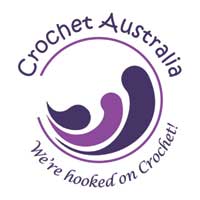Understanding Cotton February 2021
When people say they crochet with cotton, many people associate this with using thread and making items such as doilies and table cloths. While these are still popular, there has been significant development in cotton in recent years and it can be found in all sorts of thicknesses – t-shirt yarn, 10 ply, 8 ply, 5 ply, 4 ply, 3 ply – blends with silk, acrylic and wool – and a huge range of colours. As a natural fibre cotton has durability and absorbency up to 27 times its own weight, it breaths and conducts heat away from the body making it perfect for household items and warmer weather.
There is different terminology used when discussing cotton. In this tip we’ll look at the different types of cotton and how they affect your finished item, so that you can choose the right cotton for your next project.
Mercerized Cotton vs Unmercerized Cotton
Mercerized Cotton – This means the cotton has undergone a particular type of finishing process – a sodium hydroxide bath then neutralized with an acid bath. This strengthens the fibres by untwisting them and expanding them, which also increases the lustre and ability to absorb dye. This means that the colours are often brighter, it has a silky finish, it is more resistant to mildew, less likely to shrink when washed, and less likely for the dye to  run. Only 100% cotton can be mercerized. It will always be stated on the label. Traditionally cotton thread was referred to as mercerized cotton, but it now encompasses much more.
run. Only 100% cotton can be mercerized. It will always be stated on the label. Traditionally cotton thread was referred to as mercerized cotton, but it now encompasses much more.
Unmercerized Cotton – The cotton hasn’t been treated to a finishing process and is therefore more natural. While it is super absorbent, it absorbs dye differently so the colours are often more muted than mercerized cotton, and has a matte finish. It generally has a slight ‘furry’ appearance Any cotton blends – eg cotton/bamboo, cotton/acrylic, cotton/wool, cotton/silk will use unmercerized cotton. The label will not state that it is unmercerized. Therefore if it doesn’t state mercerized it is unmercerized.
Gassed – This is a second process generally applied to mercerized cotton thread. The thread, once mercerized, is passed over an open flame. This incinerates any stray fibres or lint that exists and makes for a brighter and smoother thread.
Perle – This is also a 100% mercerized cotton, with a high lustre, which always has an S twist. It is a non-divisable thread which gives it a raised look adding texture.
Organic – The cotton has been grown on organic fields without the use of chemical fertilisers, is farmed in a sustainable manner and way to ensure the continued fertility of the land it grows on. The dyes used are also chemical free.
Twist – Cotton fibres are spun together to form threads. The direction of the spin is called a twist. Twists per inch refers to the tightness of the twist. Twists are categorized as S-twists or Z-twists, depending on the direction in which it is spun. When two are more spun threads or yarns are twisted together, this is called plying. Plying threads together  produces a thicker yarn. Twisting gives additional strength to the yarn and helps to avoid fraying and abrasion of the fibres. (We’ll talk more about S and Z twists next month). Traditionally cotton thread is very tightly twisted giving it its strength.
produces a thicker yarn. Twisting gives additional strength to the yarn and helps to avoid fraying and abrasion of the fibres. (We’ll talk more about S and Z twists next month). Traditionally cotton thread is very tightly twisted giving it its strength.
Braid – Some cotton is braided instead of being twisted together. This creates cotton yarn which is more like a cord (but is softer), but has the advantage of being very durable and won’t split – it is perfect for household items and bags, belts, etc.

